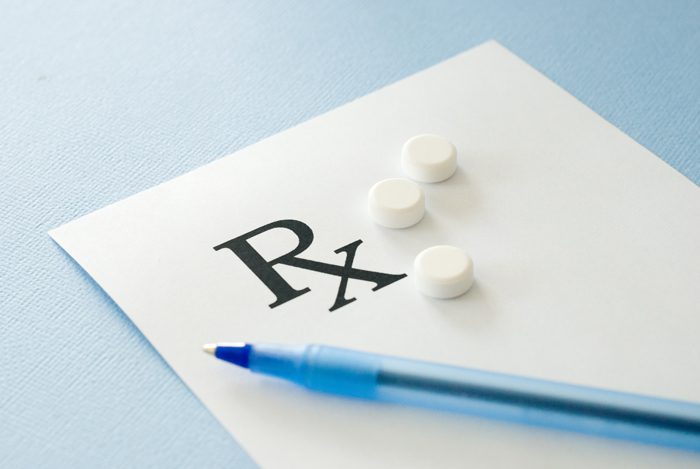Doctors struggle to define the line between addiction, medical dependency
By: ELLYSA GONZALEZ
It (re)started with an injury.
Kristopher was celebrating several consecutive months of being clean with a trip around town on his new motorcycle.
He doesn’t remember much about the accident, but one month later, he woke up from a coma.
His injuries were extensive. He had broken bones, bruises and lacerations to almost every part of his body.
Doctors gave him morphine and hydrocodone to numb the pain.
“That’s where I became addicted to opiate use,” said Kristopher, a recovering drug addict who agreed to speak to A-J Media on the condition that only his first name be published.
The misuse of opioids is a growing epidemic in the United States.
Statistics from the American Society of Addiction Medicine Opioid Addiction 2016 Facts & Figures show an estimated 21.5 million Americans at least 12 years of age and older had a substance abuse disorder in 2014 and 1.9 million of those cases can be linked back to prescription medicines.
In 2004, Krisopher became one of those statistics. His opioid drug addiction problem eventually led him to heroin.
After 30 surgeries and multiple injuries varying in severity, an opioid prescription drug was almost unavoidable if he wanted to get rid of the pain.
Dr. Miles Day, medical director at The Pain Center at Grace Health and pain medicine fellowship director at Texas Tech University Health Sciences Center, said pain management doctors often find themselves in the middle of the prescription pill controversy.
“I think there’s a misconception of what pain management physicians do,” he said. “We do our best to avoid using opiates if at all possible.”
Sometimes it’s not. He usually opts to try non-steroidal or muscle relaxant drugs first.
“We don’t just indiscriminately prescribe patients opiates without looking at the ramifications of what we’re doing,” he said. “We have to adequately screen patients to see who is the best candidate. Some of the treatments we do aren’t successful.”
Day said potential addicts generally, though not always, fit a certain description.
“Some of the things we look for: males under the age of 40, patients who smoke, patients who have a history of alcohol dependency, a history of opiate dependence, patients who have pain in more than two regions of the body,” he said. “Patients who have seen multiple pain physicians end up telling you are their doctors. ‘You seem to understand me.’ You don’t look for one individual thing. There’s usually several.”
Determining addiction is rarely that simple, he said.
“There are written short tests that you have that patients fill out that help stratify that patient’s potential for developing dependency on an opiate,” Day said. “You can use these things to help determine whether or not that patient may be appropriate for the things they’re taking.”
Dr. Ryan Lewis, an emergency medicine physician formerly with Covenant Health, said it’s a question he deals with daily.
He described it as a “multi-tiered problem” for both patients and providers.
“While we will always err on the side of adequate pain control, there is ample education, policy and procedures in place to limit the ability or the chance of inappropriate prescription writing or medication utilization,” Lewis said.
Kristopher said doctors carefully monitored him during the months he was hospitalized. The then-20-year-old was known at the hospital as a “clock watcher,” he said.
“I would watch the clock,” he said. “I knew when I could get my medications whether I needed it or not.”
He took advantage and often asked for more, sometimes in concoctions with drugs like Benadryl.
“I knew that it would up the high,” Kristopher said.
Determining addiction versus dependency is challenging, especially in situations like Kristopher’s.
Lewis said doctors do the best they can.
“Pain is very subjective,” he said. “Who are we to say what one person’s pain is or isn’t? That’s what leads to significant over-reliance on pain medication. People are so quick to jump to the one side of pain control that they may, as medical providers because we all want to do right for our patients, make them as comfortable as possible.”
Dr. Christopher Piel, emergency room medical director at University Medical Center, said medical literature shows prescription drug use has risen over the course of the last 10 years.
In the state of Texas, Piel said, an information exchange program detailing a patient’s prescription history is available for doctors across the state. But it doesn’t help in all situations.
The database only keeps track of medications prescribed within the state, he said. Without thorough questioning, knowing a patient has hopped from state to state racking up prescriptions is almost impossible and it’s not something an addict would be anxious to reveal.
The restrictions have helped, said Bob Howell, a licensed chemical dependency counselor for The Ranch at Dove Tree.
“The medical community has a strong awareness of the risks,” he said.
Steps have been taken to keep those risks under control but it inadvertently opens another avenue, he said.
“What that does is develop a market for illegal or illicit drug use in trafficking of opioid drugs,” he said. “You may have noticed or heard there is an increase in people looking to medicine cabinets or relatives or friends and seeking out this drug, even online. The internet people, they try to shut them down fairly rapidly but people can purchase, illegally, these drugs online.”
Doug Spearman, CEO of The Ranch at Dove Tree, said less than a quarter of misused prescription drugs are obtained through doctors’ visits. Abused prescription obtained through friends or relatives are twice as high, he said.
Piel, with UMC, said patients’ pain hasn’t changed. “We’re just prescribing more,” he said.
Statistics from the American Society of Addiction Medicine Opioid Addiction 2016 Facts & Figures shows 259 million opioid prescriptions were written in 2012. According to ASAM, that’s “more than enough to give every American their own bottle of pills.”
For some, it’s not as easy to discern when you have a problem.
“When I noticed I had a problem was whenever I got out of the hospital,” Kristopher said. “They sent me home with hydrocodone. I was sitting at home and I started taking them myself. I was hurting.”
They never seemed to take care of the pain, Kristopher said. So he started popping a few more than the recommended dose. It was the first time he really got to feel the high.
“It always makes you feel like you have energy, like you’re invincible,” he said. “Then they always step up the pain medicine whenever you’re at the hospital to the allotted morphine stuff that makes you feel like you’re on heroin.”
Cocaine was his drug of choice in the past, he said. But the high from prescription medications felt better.
Opiate prescription drugs play into the part of the brain that processes pleasure, said Spearman, with Dove Tree.
“That oftentimes leads to overuse,” he said. “That’s a constant battle that physicians and healthcare providers are combatting. It produces such pleasurable effects on the individual that they’re going to abuse it.”
Karmen Adkins-Neal, a licensed professional counselor and Clinical Director of Inpatient Services for The Ranch at Dove Tree, said most people don’t realize they might need help until relationships and other aspects of their life start falling apart.
“For most of our clients, it’s consequences as a result of their using,” she said. “It helps them get into the place where they need treatment. Losing family, ultimatum of parents and spouses, loss of employment, legal problems, health problems, academic problems, particularly with the collegiate population, lead them to seek treatment. Something has happened that has caused a consequence.”
Kristopher said doctors tried to help him before he reached that point. Things in his life started spiraling out of control later when his prescription drug addiction led him to heroin.
“I had a really good doctor that helped me for a long time,” he said. “Even though I messed up, he still tried to work with me.”
Doctors tried cutting his doses and being stricter, he said. It didn’t work because he had the medication and had full control of when and how much to take.
“I don’t’ have enough willpower not to abuse whenever I have all the medication in my possession,” he said.
Doctors are aware of the issue and it’s made them more conscious of how much and to whom they prescribe, Piel said.
“In those cases, we would probably err on the side of safety and get by by writing them a very short prescription with demands that they follow up quickly and giving them some options to follow up again and maybe discuss that with a primary physician,” he said.
Making those decisions is tedious.
“The one thing we don’t want to do is we don’t want to deny someone who legitimately needs treatment of some sort from that treatment,” Piel said.
ellysa.gonzalez@lubbockonline.com • 766-8795
Follow Ellysa on Twitter @AJ_Ellysa
SOURCE:
Doctors struggle to define line between addiction, medical dependency. (n.d.). Lubbock Avalanche-Journal. Retrieved May 18, 2023, from https://www.lubbockonline.com/story/lifestyle/health-fitness/2016/07/16/doctors-struggle-define-line-between-addiction-medical-dependency/14904339007/#.V4_UnZOANBd







